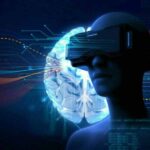Technology has become an integral part of our daily lives, revolutionizing the way we communicate, work, and learn. In recent years, one of the most exciting developments in the field of education has been the integration of augmented reality (AR) into the classroom. Augmented reality offers a unique opportunity to enhance learning experiences, engage students in new and exciting ways, and bring educational content to life like never before.
Understanding Augmented Reality

Before diving into its educational applications, let’s first understand what augmented reality is. Augmented reality is a technology that overlays digital content onto the real world, blending virtual elements with the physical environment. Unlike virtual reality, which creates entirely immersive digital environments, augmented reality enhances the real world by adding virtual elements in real-time. This seamless integration of virtual and real-world elements creates an interactive and immersive experience that has countless applications across various industries, including education.
Enhancing Student Engagement
One of the most significant advantages of augmented reality in education is its ability to enhance student engagement. Traditional teaching methods often struggle to capture and maintain students’ attention, leading to disengagement and decreased learning outcomes. However, augmented reality offers a solution by providing interactive and dynamic learning experiences that captivate students’ interest and foster active participation. By bringing learning to life through 3D models, simulations, and interactive activities, augmented reality stimulates curiosity, encourages exploration, and makes learning more enjoyable and memorable for students of all ages.
Improving Learning Outcomes
In addition to increasing engagement, augmented reality has been shown to improve learning outcomes. Studies have found that students who learn with augmented reality demonstrate higher levels of understanding, retention, and knowledge application compared to those using traditional methods. By providing a multi-sensory learning experience that appeals to visual, auditory, and kinesthetic learners, augmented reality accommodates diverse learning styles and helps students grasp complex concepts more effectively. Furthermore, the interactive nature of augmented reality encourages active learning, problem-solving, and critical thinking skills, empowering students to become more independent and self-directed learners.
The Rise of Augmented Reality in Education

In today’s digital age, traditional teaching methods are no longer sufficient to meet the needs of modern learners. With the rapid advancement of technology, educators are constantly seeking innovative ways to capture students’ attention and make learning more interactive and engaging. Augmented reality, with its ability to overlay digital content onto the real world, holds immense promise for transforming the educational landscape and revolutionizing the way we teach and learn.
The Benefits of Augmented Reality in Education
Augmented reality offers a host of benefits for both educators and students. For educators, AR provides a powerful tool for creating immersive learning experiences that cater to diverse learning styles and preferences. By integrating digital content seamlessly into the physical environment, teachers can make abstract concepts more tangible and easier to understand. For students, AR brings learning to life in a way that is interactive, engaging, and memorable. Whether exploring the solar system in 3D or dissecting virtual frogs, AR allows students to interact with content in ways that were previously unimaginable.
Integrating Augmented Reality into the Curriculum
One of the key challenges in implementing augmented reality in education is ensuring that it is seamlessly integrated into the curriculum. While AR has the potential to enhance learning across a wide range of subjects, it is essential that educators carefully consider how and when to incorporate this technology into their teaching practice. By aligning AR experiences with learning objectives and curriculum standards, teachers can maximize the educational value of this immersive technology and ensure that it enhances, rather than detracts from, the learning process.
Empowering Educators with AR Tools and Resources
In order to successfully integrate augmented reality into the classroom, educators need access to the right tools and resources. Fortunately, there is a growing ecosystem of AR apps, platforms, and educational resources designed specifically for use in schools. From interactive textbooks to virtual field trips, these resources empower educators to create dynamic and engaging learning experiences that capture students’ imaginations and foster a love of learning.
The Future of Augmented Reality in Education

As technology continues to evolve, the potential of augmented reality in education is virtually limitless. From virtual reality classrooms to holographic teachers, the future of education is likely to be shaped by immersive technologies that blur the line between the physical and digital worlds. By embracing augmented reality and other emerging technologies, educators can prepare students for success in the 21st century and beyond.
In conclusion, augmented reality has the power to revolutionize education by enhancing learning experiences, engaging students in new and exciting ways, and bringing educational content to life like never before. By integrating AR into the curriculum and empowering educators with the right tools and resources, we can unlock the full potential of this immersive technology and transform the way we teach and learn. Augmented reality isn’t just the future of education—it’s the present.
FAQs (Frequently Asked Questions)
How does augmented reality work in education?
Augmented reality overlays digital content onto the real world, providing interactive and immersive learning experiences for students.
What are some examples of augmented reality applications in education?
Examples include virtual anatomy models, interactive science simulations, historical reenactments, and immersive storytelling experiences.
What are the benefits of using augmented reality in education?
Benefits include increased student engagement, improved learning outcomes, enhanced understanding of complex concepts, and catering to diverse learning styles.
Are there any challenges associated with implementing augmented reality in education?
Challenges include cost, technical limitations, compatibility issues, and the need for educator training and professional development.
What does the future hold for augmented reality in education?
The future looks promising, with continued innovation and collaboration driving greater adoption of augmented reality in classrooms worldwide, revolutionizing the way we teach and learn.
By providing immersive, interactive, and dynamic learning experiences, augmented reality enhances student engagement, improves learning outcomes, and fosters creativity and innovation in the classroom. While there are challenges to overcome, the potential benefits of augmented reality in education are undeniable.
Augmented Reality Education Immersive Technology Learning Student Engagement
Last modified: March 22, 2024




















